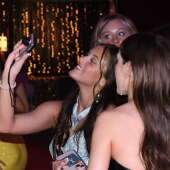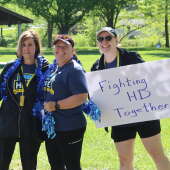What are you reading? "Give and Take," by Adam Grant

You have some fundamental subconscious assumptions about success. We all do. If you're like most of us, one of those fundamental assumptions is that a competitive orientation is the only way to win in business, and your success must logically come at the expense of someone else's.
In the book "Give and Take," The Wharton School's highest-rated professor and youngest tenured faculty member, Adam Grant, makes the compelling case that you can find purpose and meaning in helping others without compromising your own success.
Each time you have an interaction with someone else, you choose what type of individual you will be. Will you be a self-centered "taker," looking out for yourself with no regard for others? Will you be a "giver" and do what's best for others? Or will you be a "matcher" that reacts according to the situation, based primarily on how others treat you first? As you might expect, the givers end up at "the bottom of the success ladder." But givers also occupy the highest ranks of the success ladder. The takers and matchers are stuck in the middle. What gives?

In today's work environment, people collaborate, often in teams. With teams, giving works better than taking. Giving is also more powerful in the ever-expanding realm of service businesses.
Givers and takers have a radically different impact on those they encounter. Architect Frank Lloyd Wright was a classic taker. He succeeded as an architect when he lived in Chicago, where he consistently benefited from interaction with other creative people. Convinced that he built his success without any help from others, he created a summer home in Wisconsin called Taliesin, to set him up to work in total isolation. The isolation ended up being detrimental to his creative production. When Wright started working with apprentices, "his productivity soared." Even then, he was never able to appreciate what others gave him. Wright "refused to pay apprentices" (even his own son) and forced them to cook and clean.
Contrast this with the impact George Meyer has had on those around him. He wrote for "Saturday Night Live," and followed that up as a major contributor to "The Simpsons." Meyer engaged in what the National Outdoor Leadership School calls "expedition behavior:" He worked behind the scenes, doing what was necessary without worrying about getting credit. Meyer helped create a safe environment for other writers to take creative risks, and he bailed them out when necessary.
The key that differentiates givers that end up at the top of the ladder from those that at the bottom seems to be the ability to give without spreading yourself too thin. You want to be "other-interested" and see others succeed, but not to your own detriment. You actually have to be somewhat self-interested. The most successful givers act based on concern for others balanced with pursuit of their own interests. Some people become "selfless givers." They give without caring about themselves and can end up mired in "pathological altruism." These are the people that end up at the bottom due to burnout.
Another powerful concept successful givers utilize is what Grant calls "powerless communication." This concept establishes lasting influence by showing your vulnerability. Listening to others, asking questions and showing genuine curiosity about their interests are all aspects of powerless communication. This offers an alternative way to gain authentic influence. Asking for advice is a good example, as well. Rather than suggesting that one choice is the only way, pose a suggestion as a question: "Do you think it might be possible to do it this way?" This type of phrasing helps people open up to your ideas without feeling threatened.
As a successful giver, it's also necessary to increase your "perception of impact." When you realize how much your actions matter, they'll revitalize you. One way we've done this in our practice is by keeping an updated scrapbook filled with all of the kind thank-you cards we've received from patients over the years. When "compassion fatigue" sets in, we can look at that book and rekindle our fire to serve with excellence.
I challenge you to be just a bit more "other-interested." I think you'll like the results!

































